We decided on an early start for the day. On the previous day, we had visited Swaminathaswamy temple in Swamimalai, by around 11 AM and it was frightfully hot and hence, the early start.
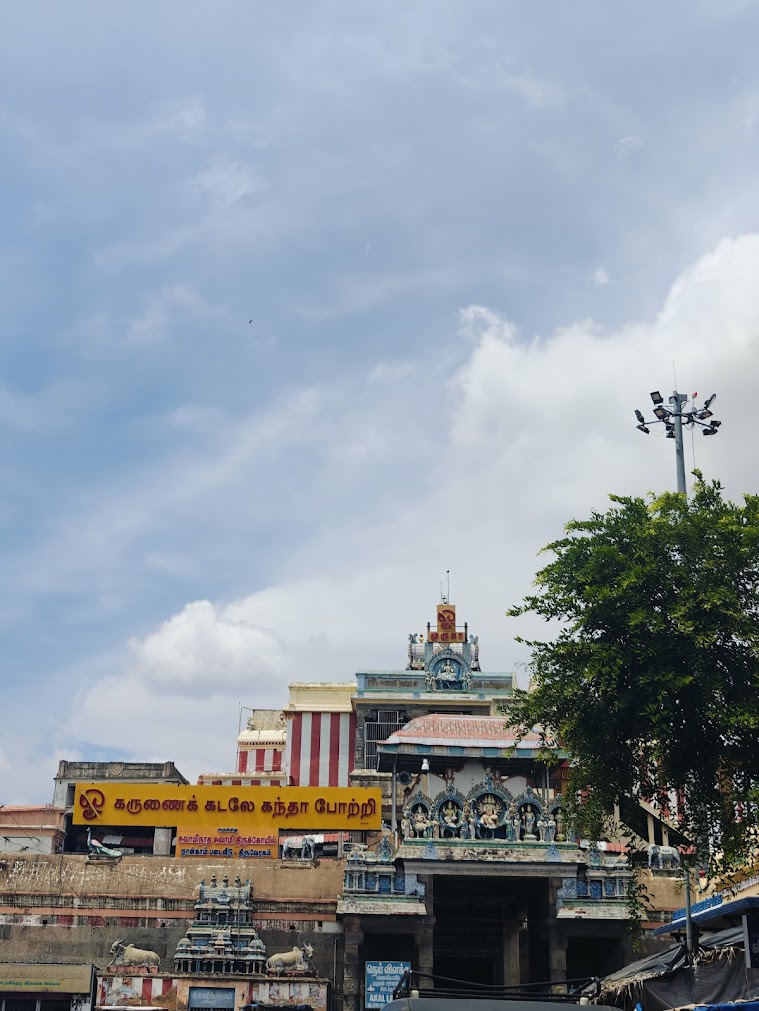

One of the six ‘Arubadaiveedugal’ or six abodes of Lord Muruga or Karthikeya, this is an important pilgrim center. A special significance for me was that it was in this very temple, some six decades ago that my first ‘mundan’ or ‘hair tonsuring’ ceremony was performed. The temple is located on a small hillock that one climbs through covered steps, numbering 60 and representing the 60 years in the Tamil calendar/ almanac. Legend has it that Brahma could not explain the ‘OM’ or ‘Pranava mantra’ and the young Murugan explained the meaning to His father, Shiva. Hence the name, Swaminathaswamy meaning Lord of the God. It is for the very same reason that Murugan’s shrine is on top of the hillock, while the shrines of His father and mother are at the ground level. There was a large crowd, and we had to buy the special darshan tickets. The temple staff is very strict about mobiles and insist on depositing them at the counters, which we did. Although crowded, we had a good darshan of Lord Muruga standing tall and firm with His countenance carrying the look of wisdom. The heat, sweat and the walk to the car was quite taxing for the kids. Lunch at the much-hyped Venkataramana at Valayapettai Agraharam was fairly decent.
Our early start was towards Pateeswaram, that was not there in our original itinerary, but some recommendations later, we decided to visit the place. A short drive on the Thanjavur highway, a detour and we were in front of the Dhenupureeswarar temple, a temple dedicated to Lord Shiva. It is however, popularly called the Durgai Amman temple for it is the Goddess who is more popular here.
The temple complex is large and there are many legends associated with the temple. It is believed that Patti, daughter of Kamdhenu worshipped Shiva here and so the place came to be called Pateeswaram. It is said, in killing Ravana, Rama committed 3 sins. One of them was the Chaya Hatti dosha because not only was Ravana an exponent of the fine arts, but he was also an ardent devotee of Shiva. Rama is said to have installed the shivling at Pateeswaram and performed abhiseka to absolve Himself of the sin. The Nandi in this temple does not face Dhenupureeswarar directly but is a little away to one side. This, it is believed is because on one hot summer day, when the child poet Tirugnanambandhar came to worship Shiva. Tirugnanasambandhar, being an ardent devotee, Shiva could not wait to see him enter and asked Nandi to move to one side so that they could see each other.

Now we were before Durgai Amman, also called Navagraha Nayaki. She is All-powerful as She stands six feet tall with eight arms, each holding a weapon or symbol. Though She stands on the head of the defeated Mahishasura, yet is a ‘shanta swarupi’, with Her face emitting grace and motherly love. People with Rahu or Kethu dosha come and pray to the Goddess during Rahu kaal, as it is believed that both Rahu and Kethu come to worship her during this time.
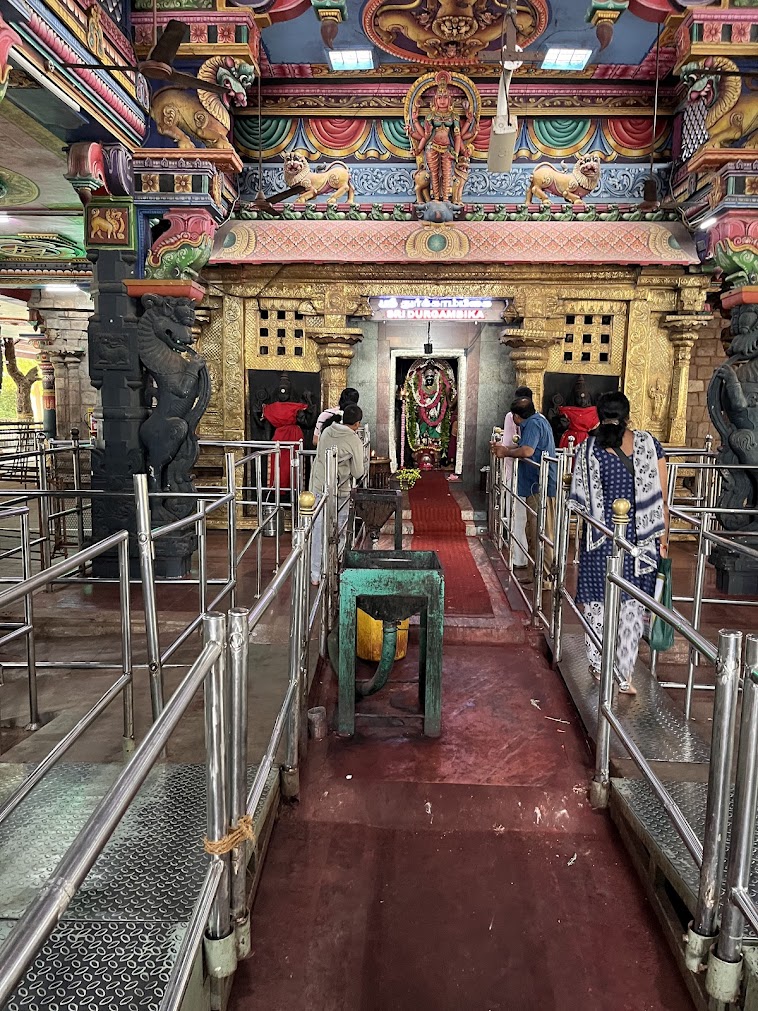
As with many temples in this region, this too is a fantastic example of Dravidian architecture, originally built by the Cholas and the improved upon and expanded by the Nayak kings. Happy that we could visit this ancient Paadal petra sthalam.
The next temple on our schedule was at Thirumeeyachur — Meghanathaswamy temple but again, more renowned as the Lalithambigai temple. A fairly long drive of close to 90 minutes along the main highway and then along narrow , winding country roads and we were in the pretty village of Thirumeeyachur.

The first thing that strikes you when you enter this over 1000-year-old temple, is its bright, new look and the cleanliness all round. Legend has it that, when Aruna, the handicapped charioteer of Surya wanted to visit Kailasa to worship Shiva, Surya mocked him and in doing so committed two sins — being mean to the handicapped and preventing a Shiva devotee from worshipping. Aruna went ahead and taking the form of a beautiful girl, worshipped Shiva at Kailasa. When he returned and told Surya of this, Surya asked him to display the form of the girl and on seeing her, wanted to possess her. This angered Shiva and He cursed Surya to lose all his powers and shine. The whole world was plunged into darkness. Surya pleaded for mercy and Shiva told him to pray here for 7 months. Surya prayed to Shiva and Parvati, who were seated on an elephant and just before the 7-month period ended, shouted why he was not absolved of his sins. A furious Parvati wanted to punish Surya further, but Shiva as Meghanadhar (Lord of the Clouds) calmed Her and also forgave Surya. The vimana over the sanctum is shaped like an elephant’s back, signifying, that Surya prayed to Shiva and Parvati who were seated on an elephant.
Next, the most famous shrine of Lalithambigai, the epitome of feminine power, grace and compassion, also called as Tirupurasundari.
It was at this shrine that at the behest of the goddess Herself, the eight Vaggdevis composed the Lalitha Sahasranamam stotras that mention among other things ‘ One can worship Lalita only if She wishes us to do so’. Hayagriva is said to have initiated sage Agastya here to the Lalita Sahasranamam that is sung/chanted by devotees to this day.
It was 1 PM now and as we reached the village of Tirubhuvanam, the famous Kampaheswarar temple was closed for darshan. Along the sannathi street, on both sides are shops of various sizes selling the local specialty — Handwoven Tirubhuvanam silk sarees. As we got out of the car, agents of different shops thronged us asking us to visit their shops for best quality, lowest priced sarees. Tirubhuvanam is another centre known for its hand-woven silk sarees, much the same way as Kanchipuram.

My wife was clear that she would buy only from the authorised co-operative society, Thico Silks. An hour of tested patience for me, as the wife finally picked up two sarees and her heart was full, my wallet was lighter.
Back at our hotel in Kumbakonam for lunch, a brief rest and in the evening we decided to take an autorickshaw to visit the temple which is special for people with the Rishabha rasi (The Bull, as per Hindu astrology). It is the Sivayoginathar temple in Thiruvisainallur, where Shiva is worshipped in lingam form and His consort is Soundaranayagi. Getting an autorickshaw was an adventure in itself. We first approached an auto driver, who demanded Rs.400 for the up and down trip. Saying No, we walked a little distance and flagged a moving auto, who agreed to ferry us to and fro for Rs.300. Just as we were able to get in, there came the driver out a parked auto and started fighting with this driver, who beat a hasty retreat. Now, the other driver who claimed, he was at the auto stand demanded Rs,500. Th first driver, leaving his vehicle walked over and joined this driver. Saying No, we moved further and took a turn to the main road, where we flagged a passing autorickshaw. The demand was Rs.600. Even as we were signifying our reluctance, the earlier two drivers turned up on foot and there was big quarrel among the three. Meanwhile we walked in the opposite direction, got into an auto for Rs.400 and as we crossed the earlier spot, the 3 drivers were still arguing vehemently and did not even see us. A ride of about 4-5 kilometers and, we were before the Sivayoginathar temple.

Built by the medieval Cholas and later expanded by the Thanjavur Nayaks, this temple is one of the Paadal Petra sthalam. Legend has it that a king from Kerala who had illicit relationship with many women, cheated them and earned their curses. When he wanted to turn over a new leaf, a yogi advised him to take a dip in the Kaveri and pray at Thiruvisainallur. It is believed that worshipping in this temple removes curses, especially from women. Those born under the Rishabha rasi also visit this temple and make offerings and special prayers to Nandi. Our visit being on Pradosam day, as we entered the sanctum, we found that the priests were performing abhisheka for the massive lingam and it would take quite a while before the public aarti. We just prayed to the Lord and moved towards Nandi, who was being offered special prayers on Pradosam. Having performed milk abhisheka, we moved back to our waiting autorickshaw.
Got down at the Sarangapani temple in the heart of Kumbakonam. After a number of Shiva temples, this one has Vishnu as the presiding deity. We stood amazed at the 11-tiered Rajagopuram, which at 173 feet, dominates the Kumbakonam skyline. Dusk had fallen, so we could not clearly make out the intricate carvings on the gopuram, yet the overall look was magnificent.
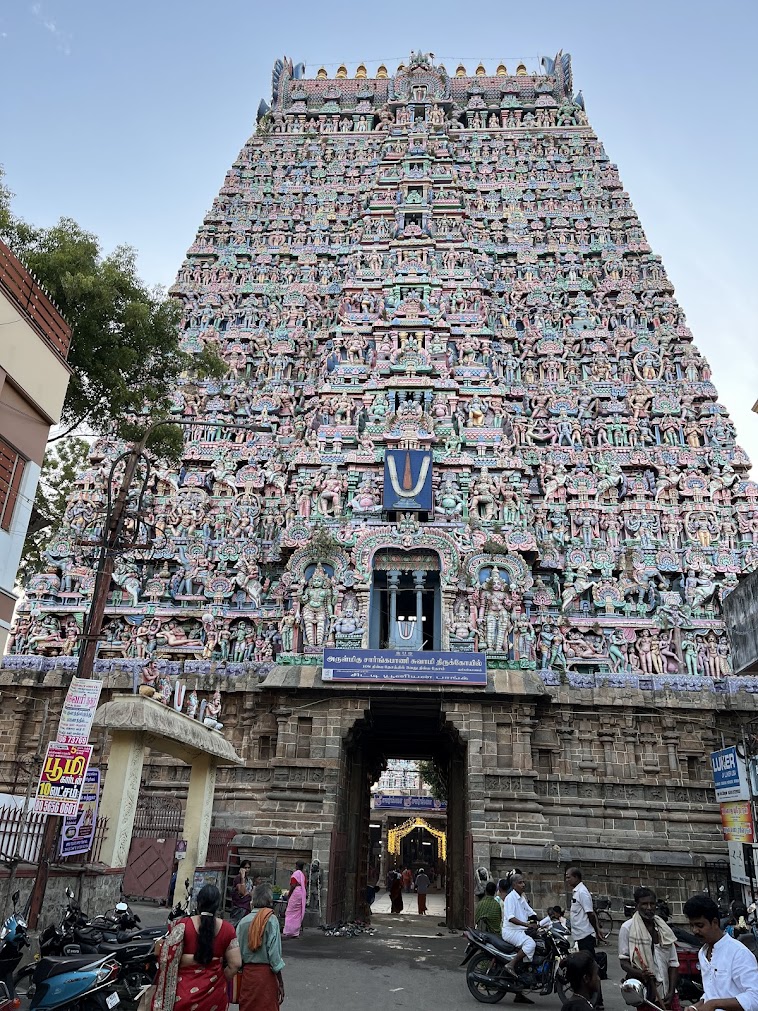
One of the 108 Divya Desams revered by the Alwars, this massive temple complex is believed to have been constructed during the time of the medieval Cholas with later contributions and expansions coming from the Vijayanagar rulers and the Madurai Nayaks. Surrounded by huge granite walls, the temple complex is imposing, with all shrines and water bodies enclosed within, except for the Portamarai tank that is located outside. Sarangapani, an incarnation of Vishnu is said to have appeared before Hema Rishi who was performing a penance besides the Portamarai tank seeking to have Vishnu’s consort, Lakshmi, as his daughter. Vishnu granted him his wish and, soon Lakshmi emerged from the Portamarai( Golden Lotus) tank, carrying a hundred lotuses and came to be called Komalavalli. Vishnu descended on earth from Vaikuntam in a chariot drawn by elephants and horses and stayed at the Someswaran temple, next door trying to convince Komalavalli to marry him. She agreed and the wedding took place. The name Sarangapani literally means ‘One who has a bow in His hand’.
Had a wonderful darshan of Sarangapani and then Komalavalli. This was followed by piping hot prasad of sarkarai pongal. Could not but admire the magnificent carvings and pillars, their proportions, the attention to detail and the overall beauty.
Our Temple Run for the day drew to a close as we slowly walked back towards our hotel.
Discover more from BalasBroadcast
Subscribe to get the latest posts sent to your email.


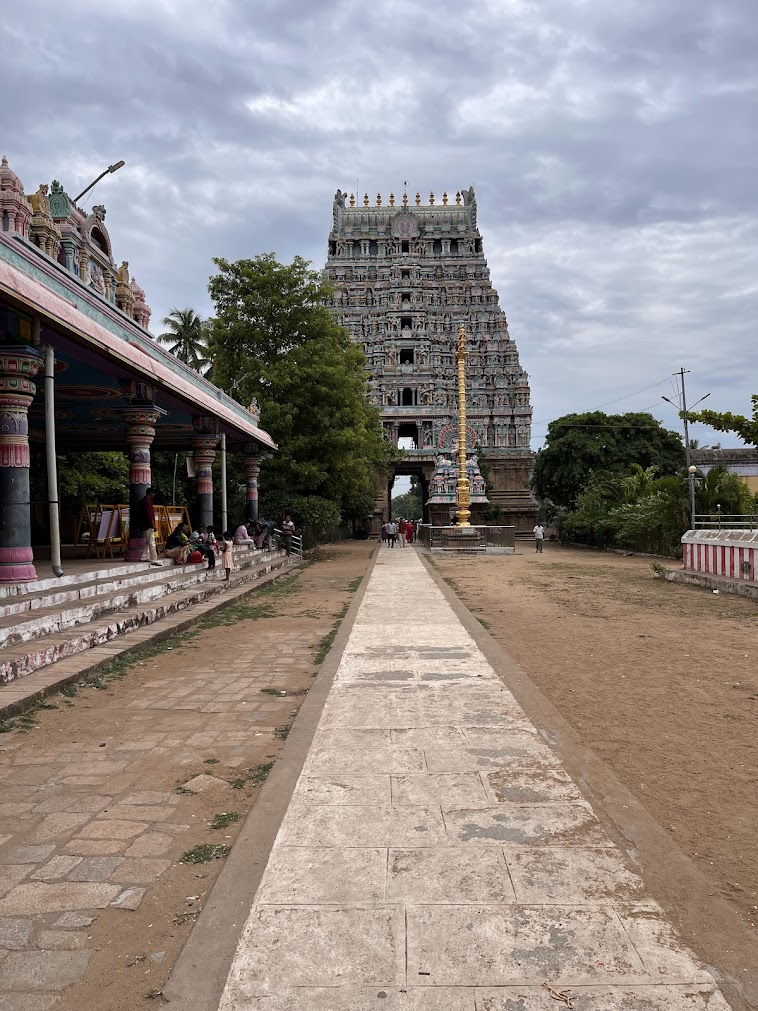


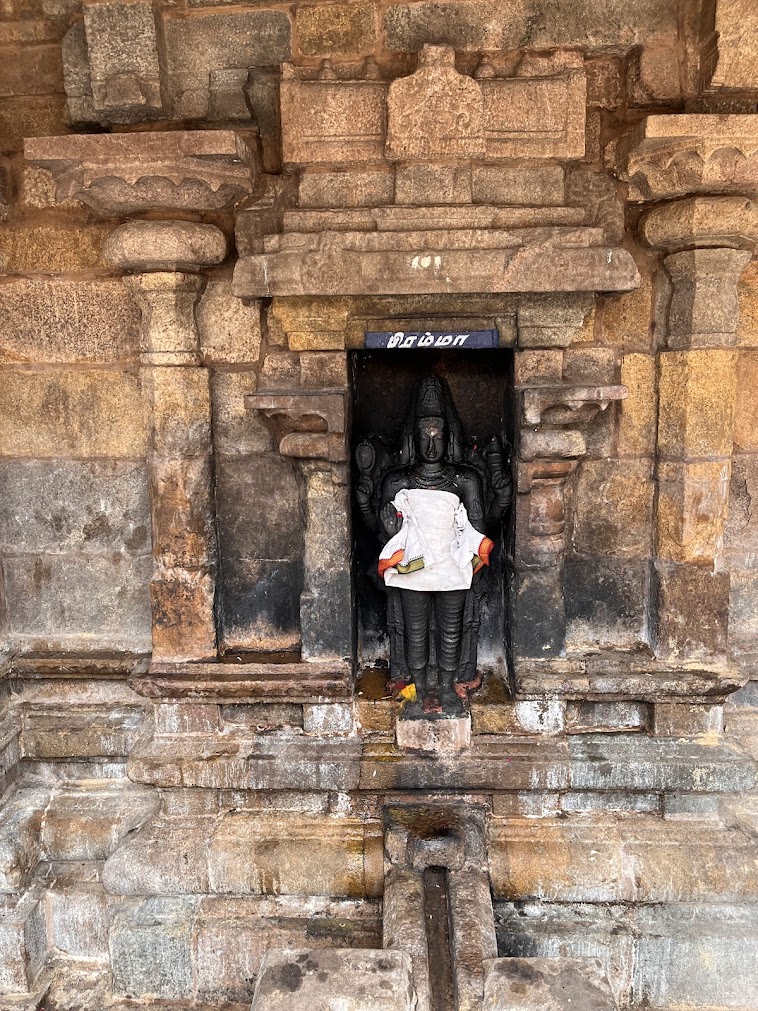

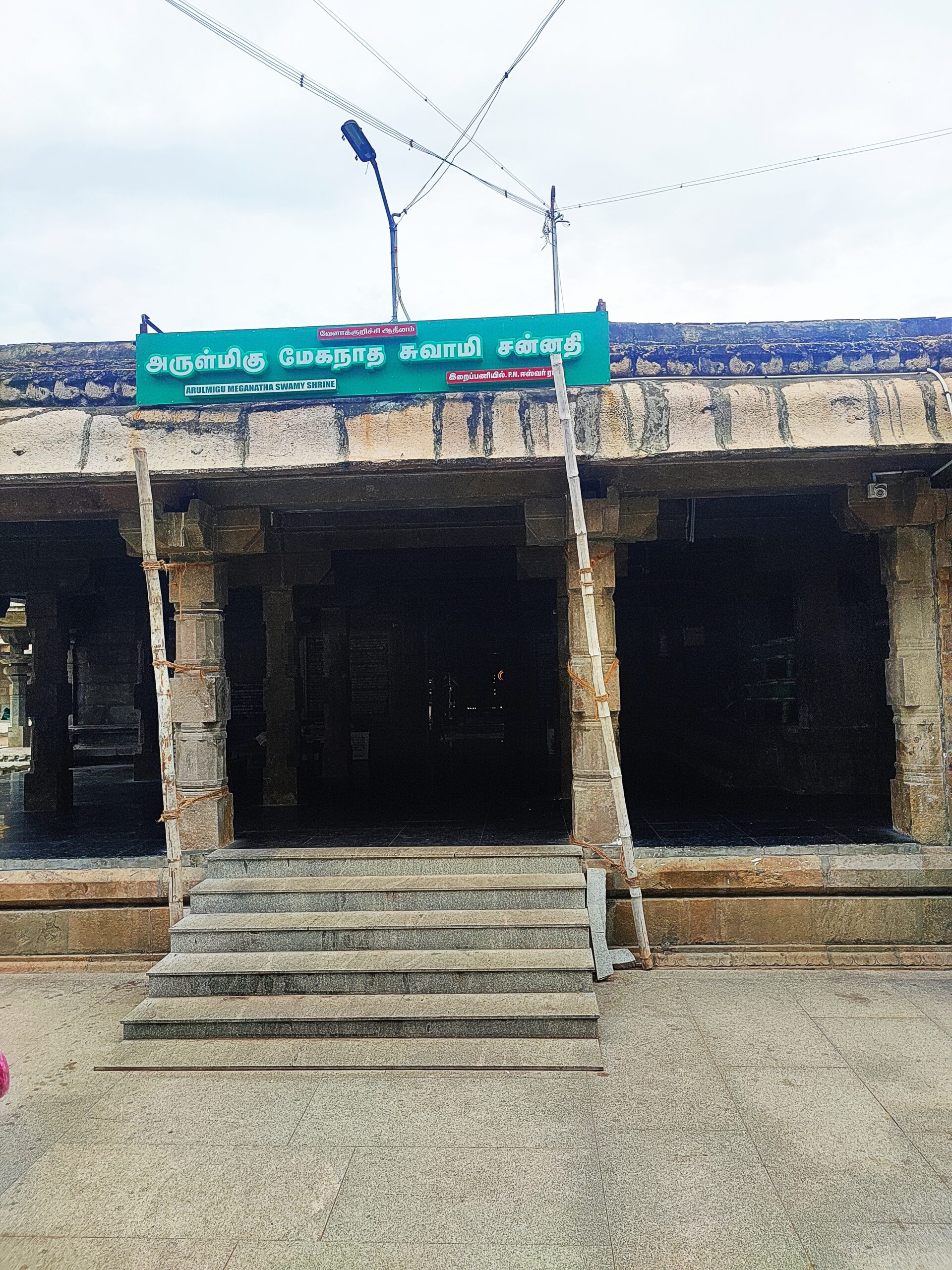

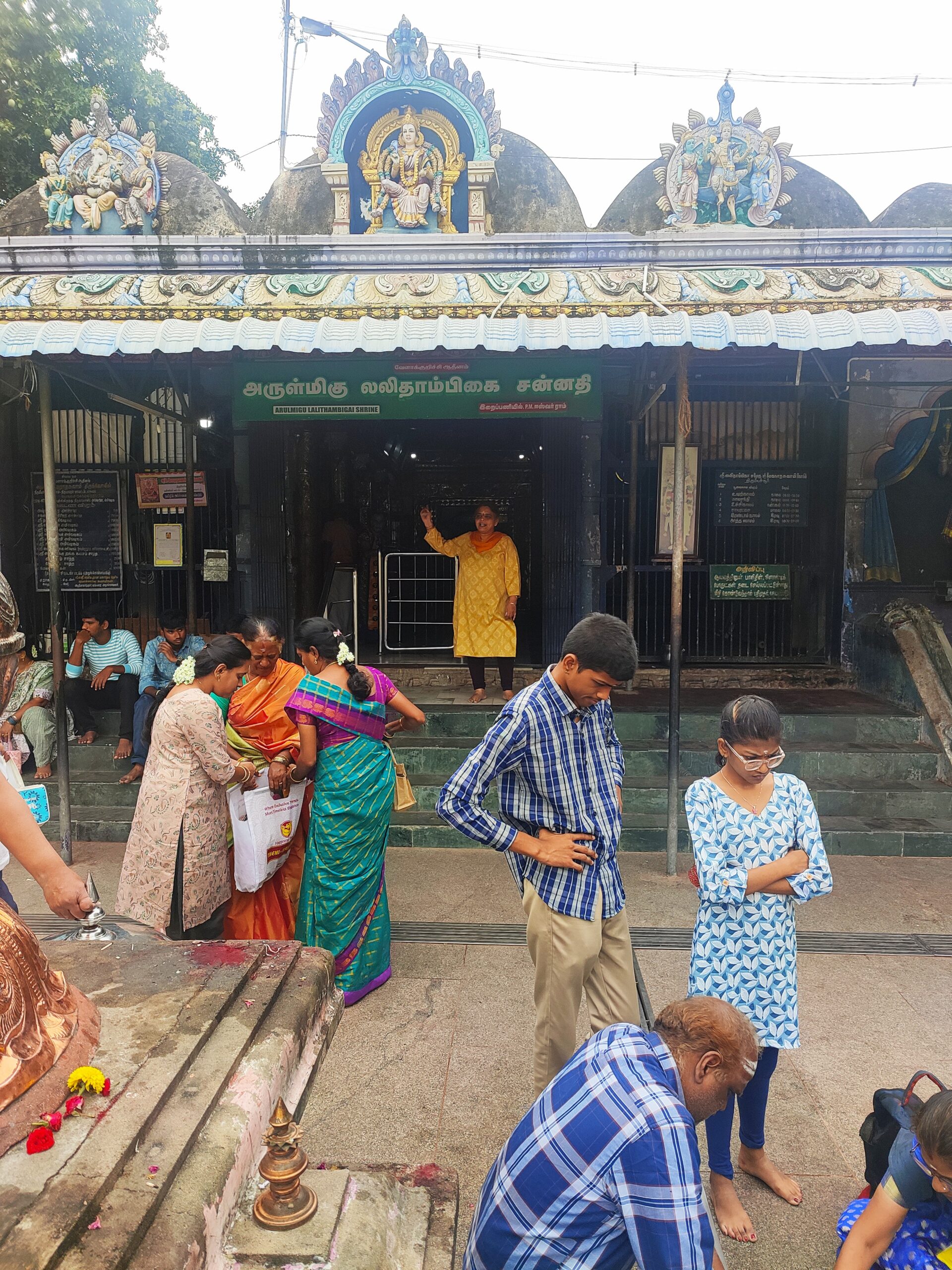
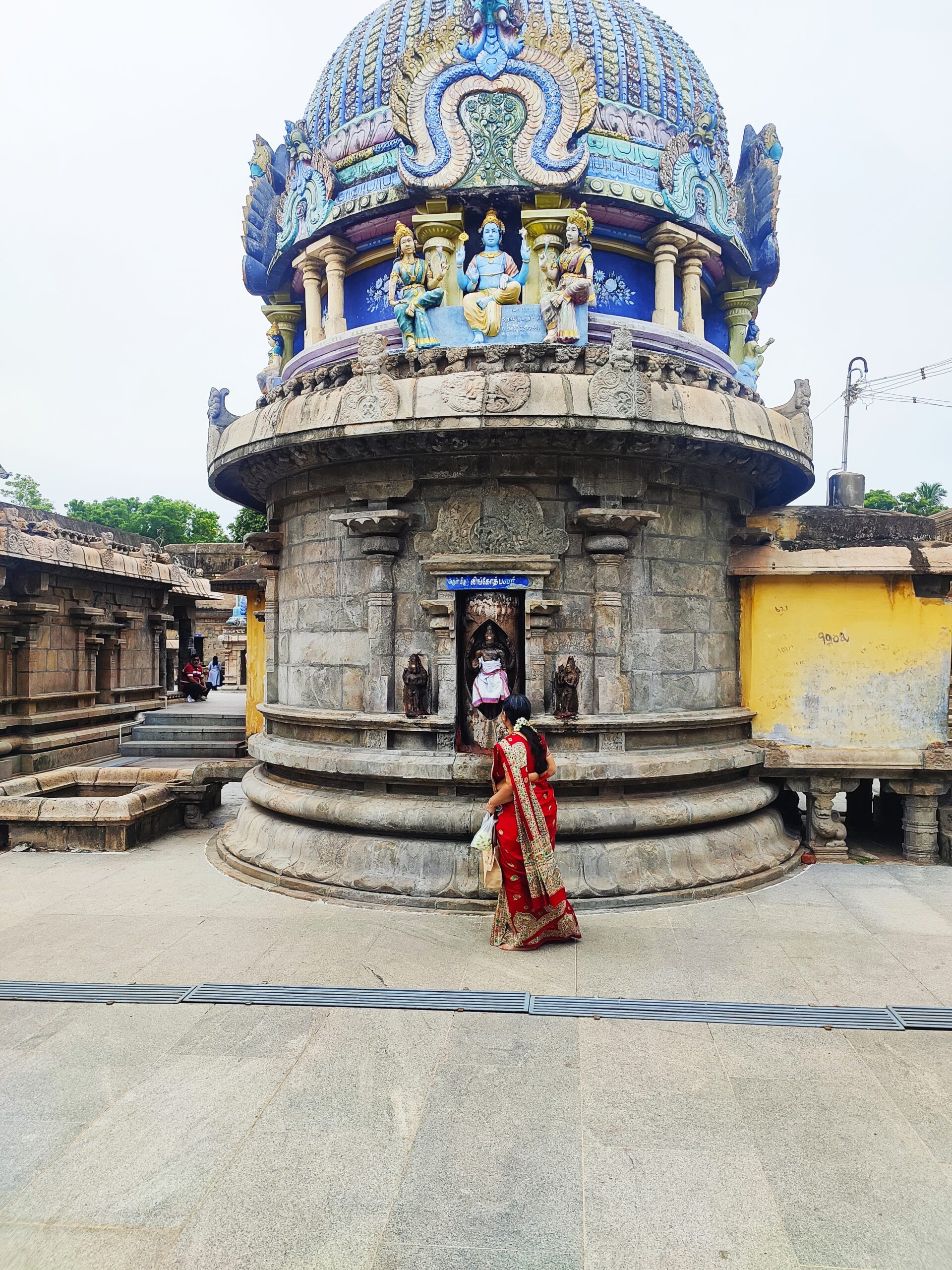
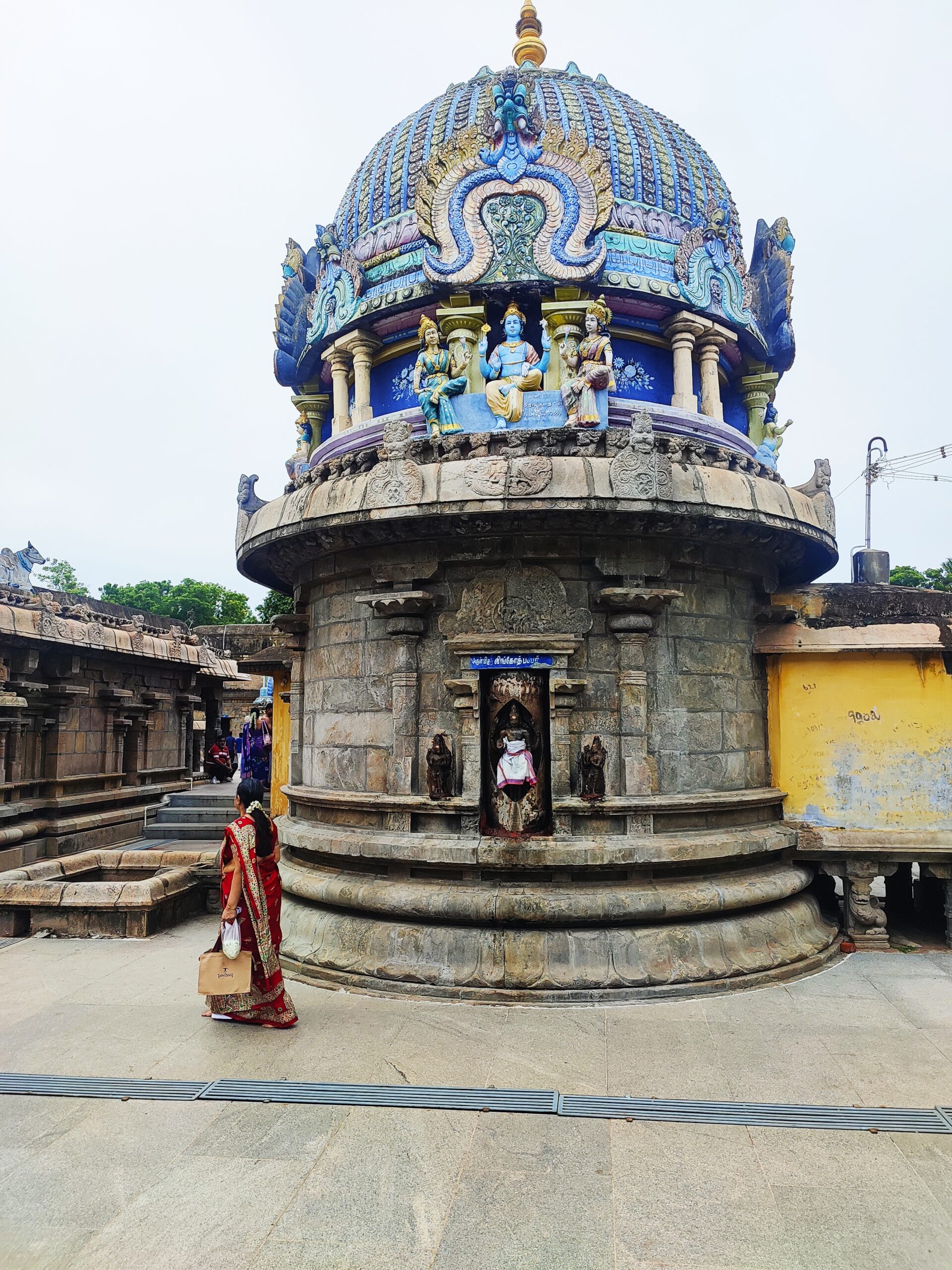
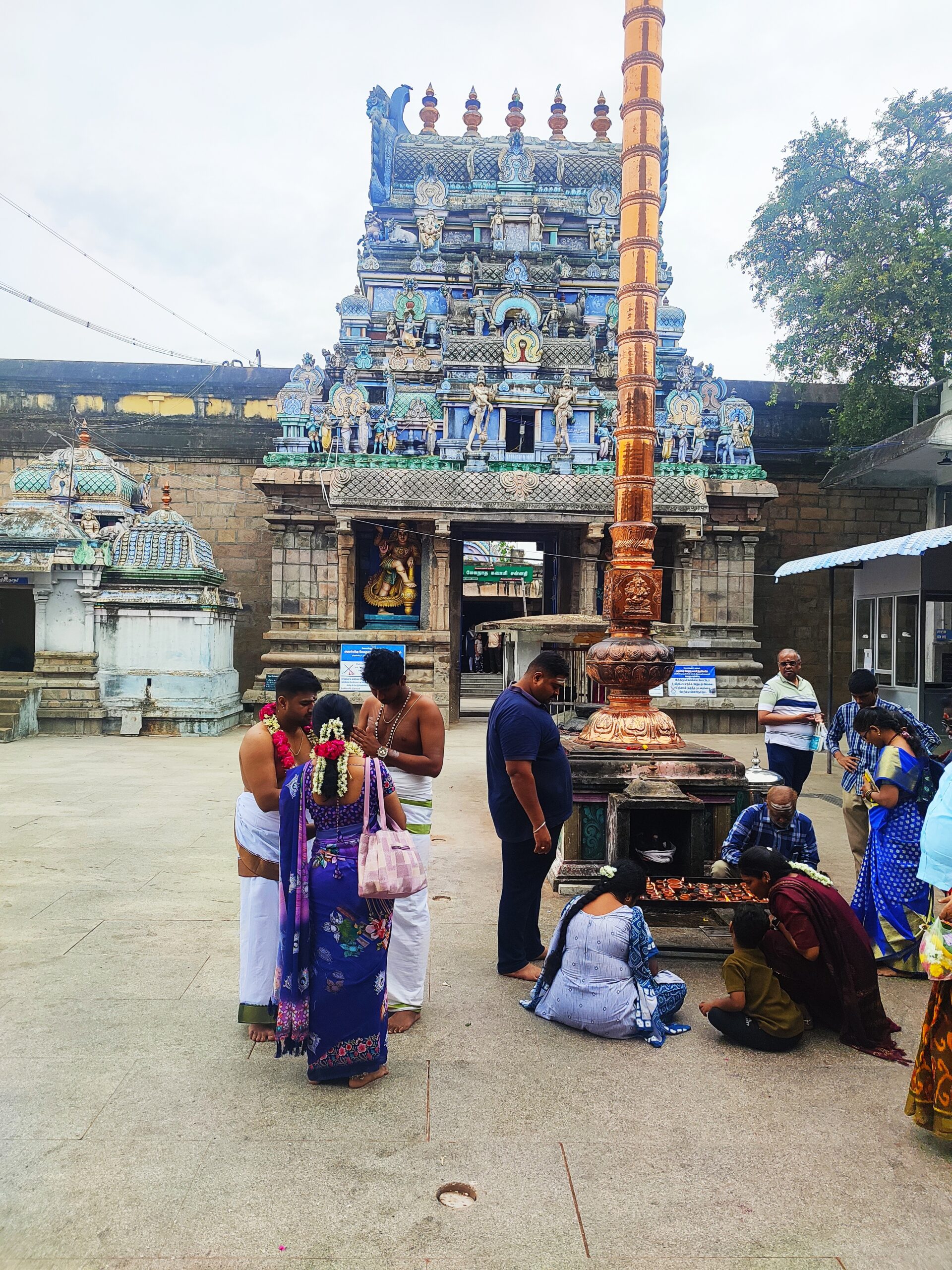

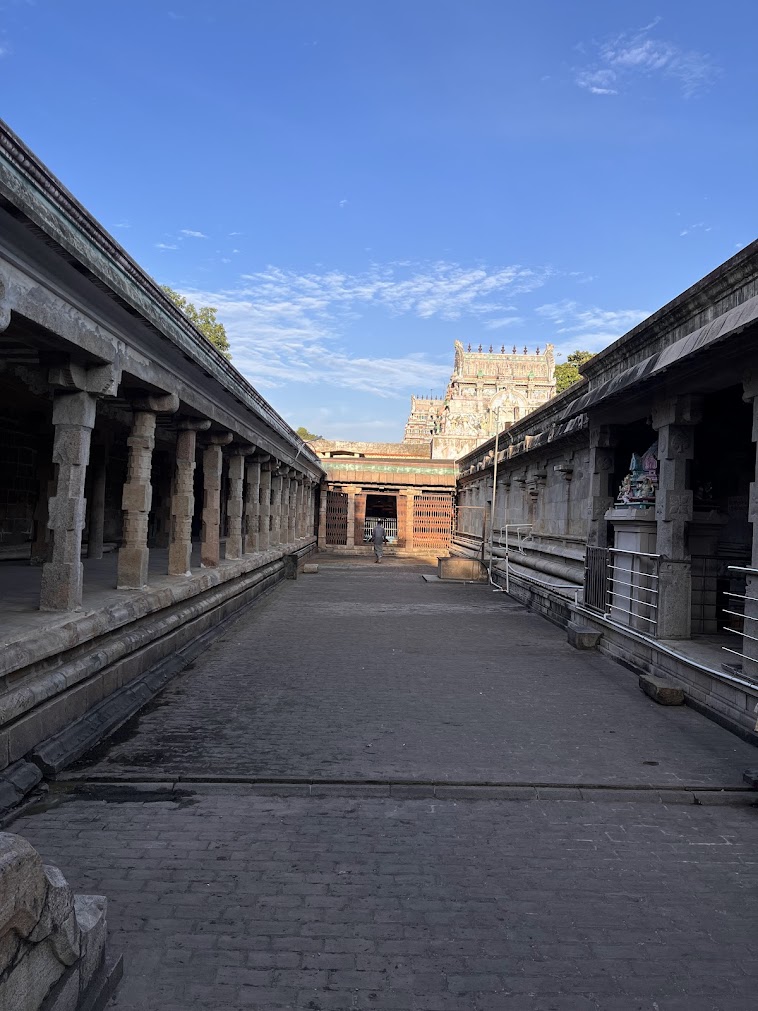

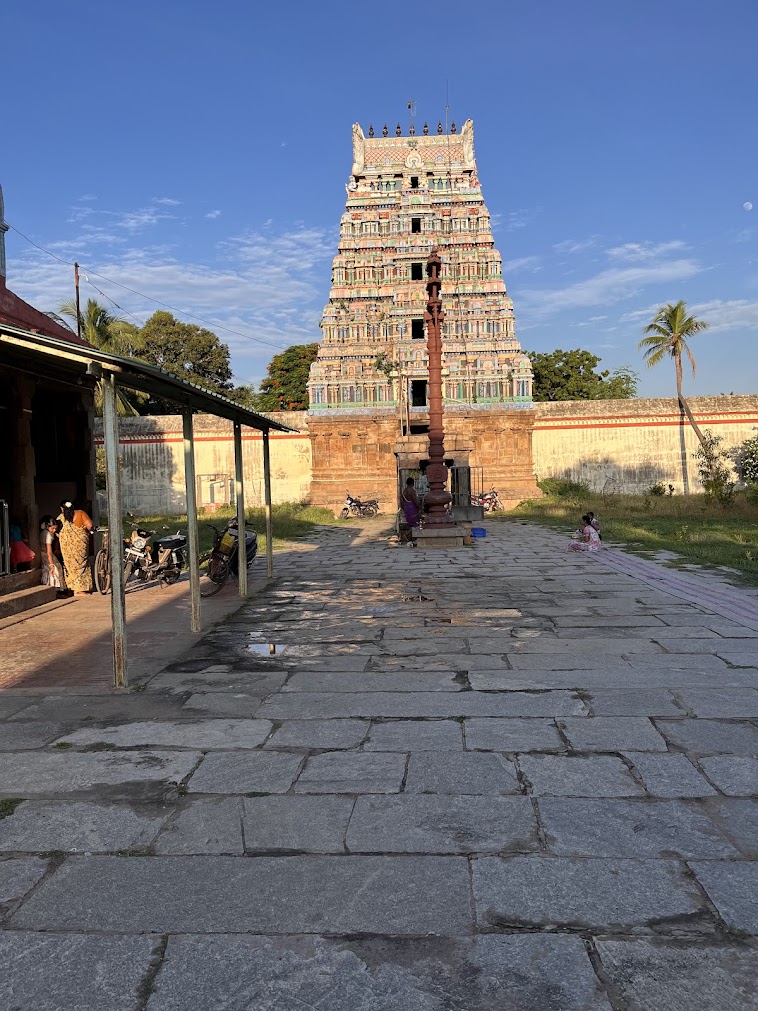

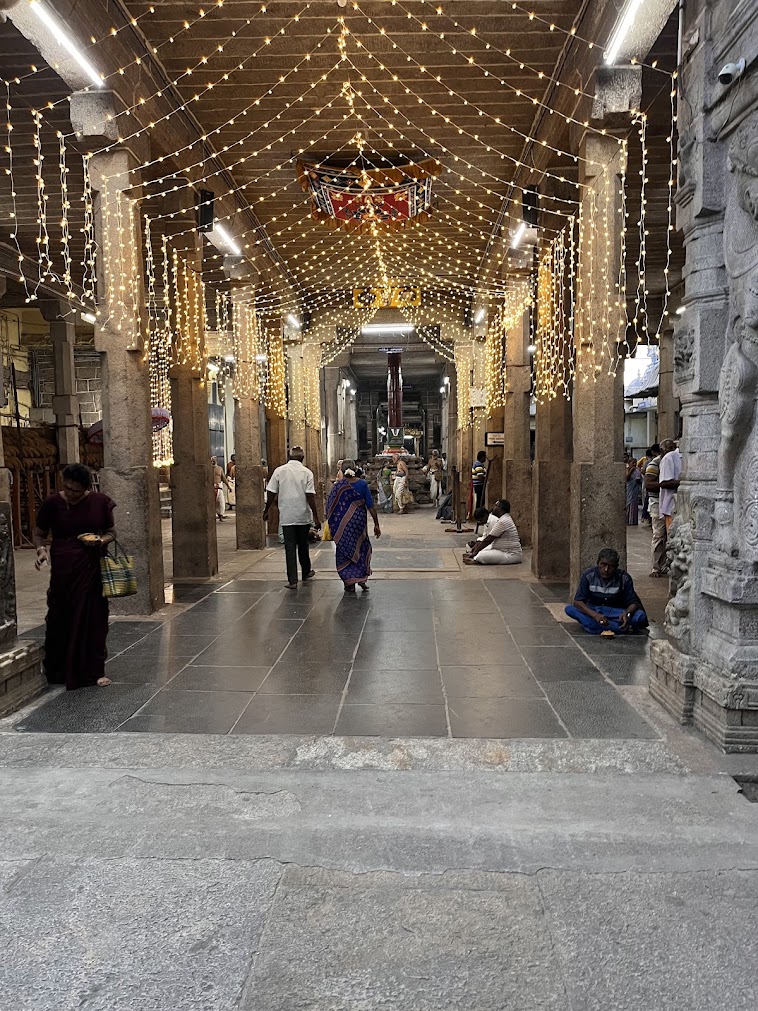
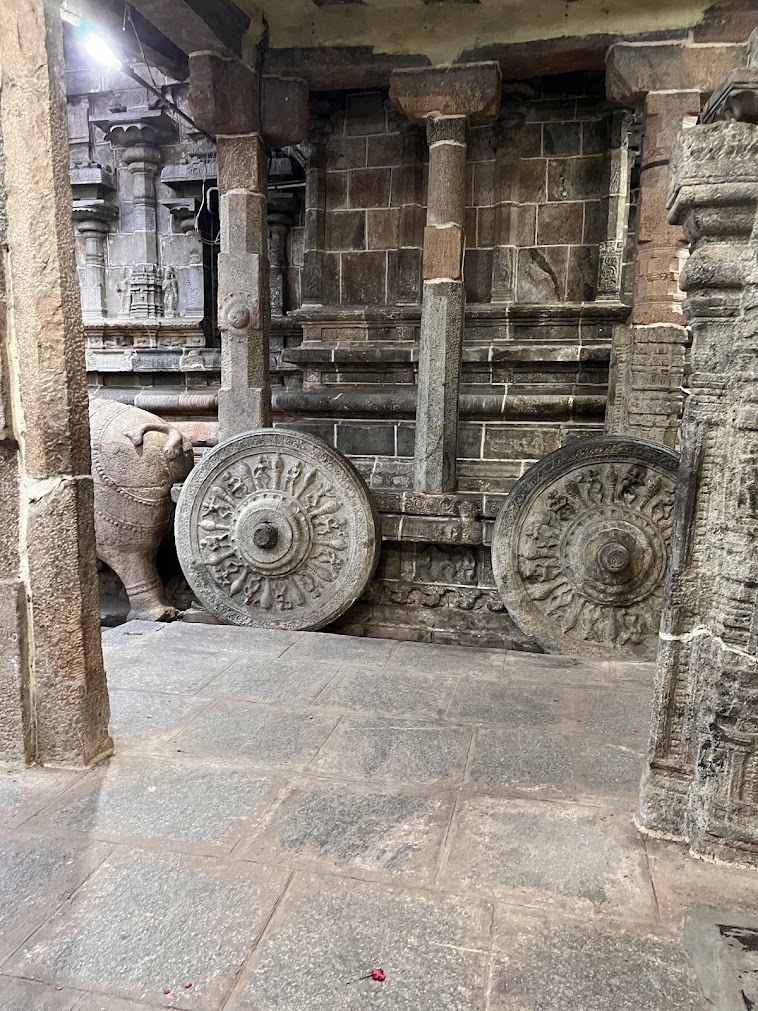
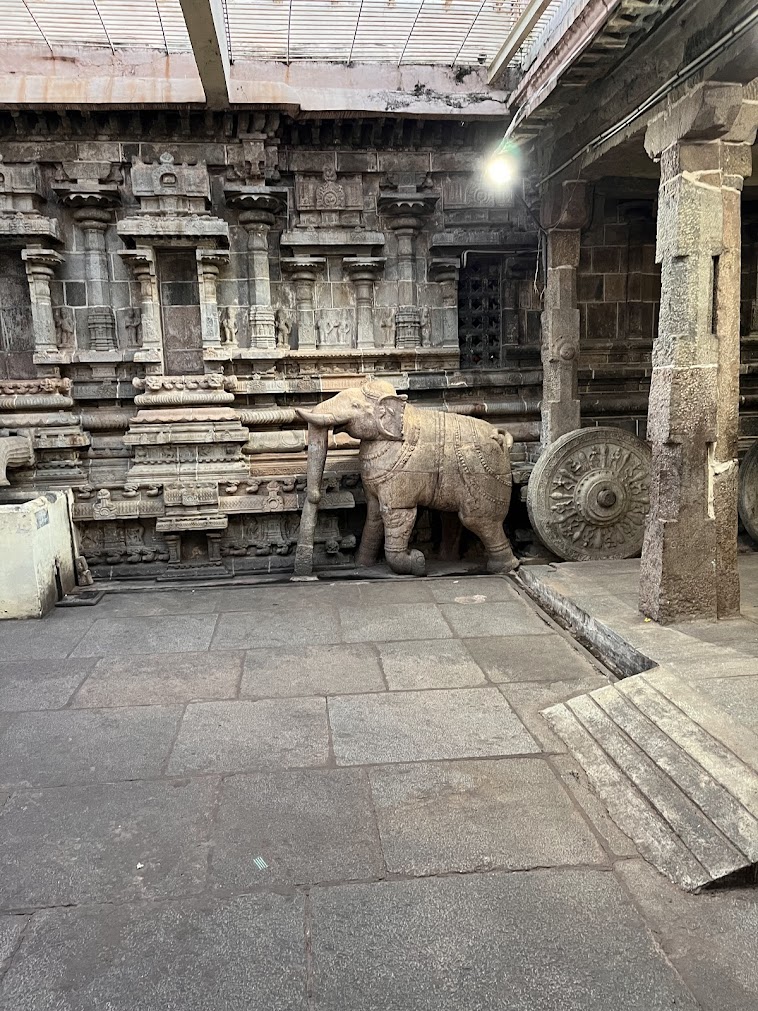
I vaguely remember, then I was 2 year old, an one year old infant with a flowing nose, attended by another “hairdresser”, profusely crying & resisting his head tonsuring!
I vaguely remember, then I was 2 year old, an one year old infant with a flowing nose, attended by another “hairdresser”, profusely crying & resisting his head tonsuring!
As always with detailed background!